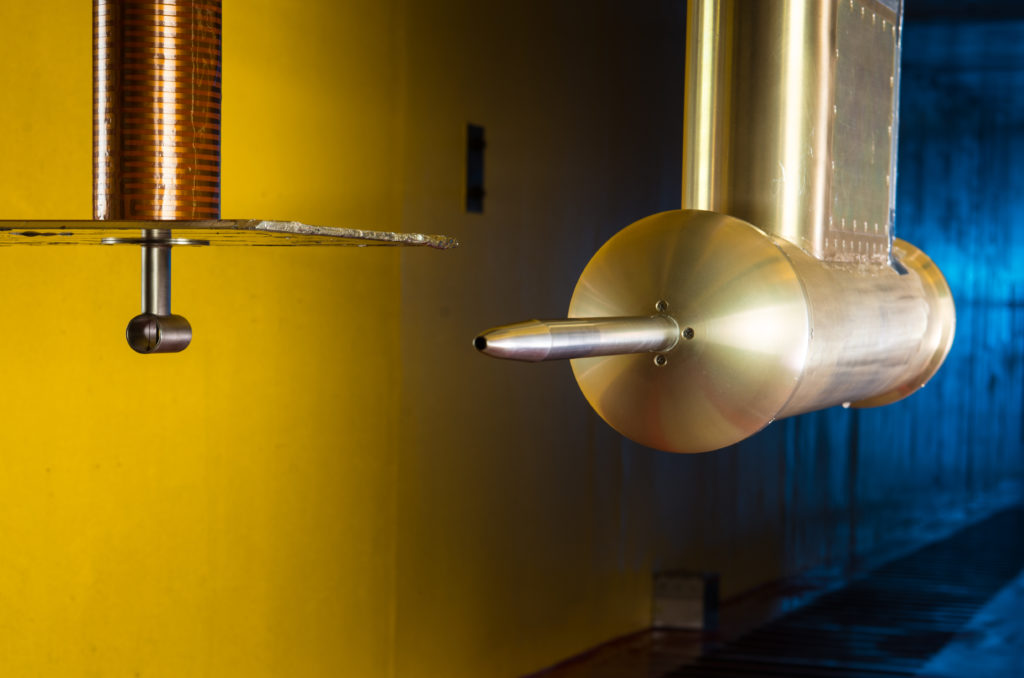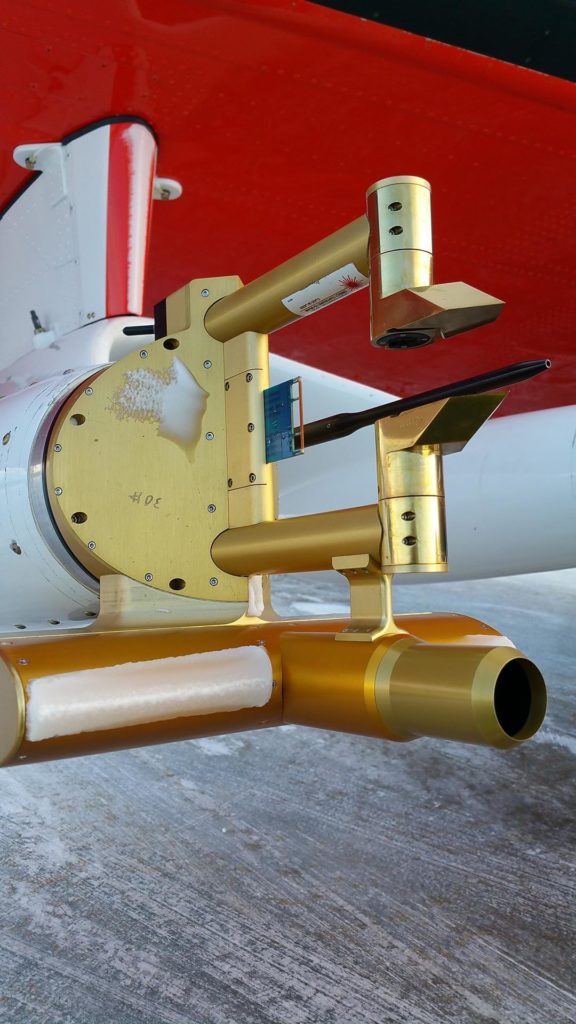Play below for the audible version of this article:
Weather conditions affect flight performance and safety and airframe icing is one of the most dangerous. Ice on airframes can cause severe aerodynamic and flight mechanical effects, significantly increasing the risk of flying.
How icing affects an aircraft’s performance and ways to mitigate the impact of icing on airframes is a major area of R&D. The recent improvements in battery technology are leading to new types of aircraft that need icing protection. Ice protection company CAV Systems’ engineering, product development and delivery vice president, Alexander Baty says, “There is more interest in urban air mobility. We are seeing a lot of interest from startup companies.
“Electrical power is obviously a precious commodity for those guys. It makes their options in terms of ice protection fairly limited.”
eVTOL aircraft and drone developers commonly use computational fluid dynamics (CFD) simulation tools during design to optimize airframes ahead of Type Certification.
“Typically in my laboratory we are improving the 3D CFD codes that are used by all the manufacturers, once they take a vehicle design to start the certification process,” says Steve McClain, mechanical engineering professor at Baylor University.
NASA’s LEWICE, (Lewis Ice Accretion prediction Code) was developed decades ago and became the standard ice accretion prediction code for certification analysis, especially for companies in the USA. LEWICE was first developed as 2D code, so only describes the air immediately above the airframe’s surface, the boundary layer (See box Lewice & Glennice).
McClain’s laboratory at Baylor University seeks to improve the fundamental knowledge of the ice accretion process and provide more accurate data for the CFD software.
“We are trying to capture the physics of icing in more detail so that manufacturers can have more confidence in predictions from LEWICE.
“With everything going to CFD nowadays, NASA is developing GlennICE, but it has a lot of other competitors in the field. There are other tools out there,” McClain says.
Another major effort to develop computer simulation tools for icing is the four-year European Union (EU) SENS4ICE project. SENS4ICE is expected to be completed next year with several flight tests. Some flight testing has already been conducted using a Russian Yakovlev Yak-42 aircraft which was carrying atmospheric test sensors.
The importance of icing research is underlined by the number and international range of partners SENS4ICE has. As well as the EU partners of Germany’s DLR and Italy’s Centro Italiano Ricerche Aerospaziali (CIRA), Russia and the USA are both participating in the project, while Honeywell and Collins Aerospace are also both involved.
Test equipment development

The aircraft testing equipment was developed during the first part of the project explains Carsten Schwarz, SENS4ICE coordinator. Schwarz leads the flight mechanics group at the DLR Institute of Flight Systems, Department of Flight Dynamics and Simulation. Super cooled large droplet icing is SENS4ICE’s focus and the project has several different approaches to testing for that.
“For this specific icing condition, we have quite a large number of sensors that are developed from different technologies. Some of those technologies have started at a very low technology readiness level and some were more advanced,” Schwarz says.
He explains that one of the technologies being used takes an optical approach. This detection technology is called shadography and involves the detection of droplets visually in images. Super cooled droplets are also important to McClain’s work at Baylor, which seeks to improve understanding of the physics of how droplets accrete on an aircraft’s surface.
“Once you have super cool droplets hitting the aerofoil, knowing the physics that happens on the surfaces and that freezing process and when it freezes is important knowledge. That’s what I’ve been doing for the past decade with NASA,” McClain says.
People may be surprised that icing is a problem that has not been solved, and McClain recognizes that it has been studied for many decades. He adds, “It is a really hard problem. It’s a multi-phase multi-species, transient non-equilibrium thermodynamics problem. Getting the amount of water that hits a specific location on the aircraft surface over a matter of a time is still a difficult computational task.”
One of the testing technologies devised uses microwaves to measure the surface accretion.
Despite the widespread availability of super computing resources, the underlying physics that the test equipment is based upon is still limited.
“Most of the heat transfer measurements that I do at Baylor are still what are called dry measurements,” McClain explains. “So, we look at something like a scale roughness model and consider how that affects the dry heat transfer and make some assumptions about what goes on when you have a multi-phased situation on a real ice surface.”
The droplets are treated as having a “quasi equilibrium,” at a temperature near zero degrees Celsius. The quasi equilibrium means there is liquid, vapor and ice present. The phenomena occurring on the aircraft’s surface is that it absorbs what little heat is in the super cooled droplet and that droplet becomes an ice particle. As droplets strike the surface, or other ice particles, accretion occurs. Laboratory work focuses on better understanding that heat transfer process to be able to make better predictions for the simulation software.
Surface roughness

As the icing grows, the aircraft’s surface grows increasingly rough. “The roughness then affects the convective heat transfer,” McClain explains.
Characterizing the existing roughness, measuring the temperatures at the surfaces, measuring the developing roughness over time – the testing technology is needed to determine how the heat transfer is affected. To stop that accretion an established solution for airliners and other large aircraft is to use electrical heating. McClain sees more research going into icing countermeasures for eVTOL aircraft.
“Most of the research that I see today is all about the urban mobility-scale aircraft and the small air vehicles. And what do you do there? Quite frankly, the power excess to power the heating elements to get through weather is not as significant as a large commercial airliner,” McClain explains. The solutions that have been used for airliners and down to the size of general aviation’s two to four person aircraft have been electrical heating or fluids seeped onto surfaces.
However, eVTOL aircraft and drones, because of their small size, new designs and use of battery electric power supplies pose challenges to the use of most existing icing mitigation technologies on the market.
“We’ve looked quite significantly at electrothermal systems. They are used on the Boeing 787, but it was found that you need quite a large amount of electrical energy to provide full protection over the entire flight envelope,” says Baty. “We have done quite a lot of work on electrothermal systems, including work which has partially developed some capability ourselves, although we don’t have anything on aircraft.”
Fluid systems are an alternative to large electrical power requirements. While carrying a tank of anti-icing fluid would seem to be a problem for drones or eVTOLs with limited payload capacities, these aircraft do not fly for very long.
“With these aircraft, their flight endurance is low. We don’t need as big a tank of anti-icing fluid as on traditional aircraft. We’re seeing more interest from other areas. The first example would be military drones, things like the General Atomics Aeronautical Systems Predator B. We’ve done three or four different systems on those types of aircraft.”
For drones, CAV Systems is trying to miniaturize its product. “We’re looking at ways to distribute fluid around the airframe without adding weight to the systems and avoid pumps,” says Baty.

CAV Systems is aiming to flight test later this year a miniaturized systems on a commercially available drone which has a payload capacity of 12kg (26 lbs). Baty’s firm has also used icing wind tunnels (See box Creating icing conditions) in collaboration with partner organizations.
SENS4ICE is also using “several icing wind tunnels,” according to Schwarz. “All our sensors have been tested in icing wind tunnels.”
Sensors will be needed for the greater automation expected for icing systems. With no pilot aboard eVTOLs, even passenger carrying eVTOL services, and drones, the detection of ice and countermeasure activation needs to be automated. For airliners, the use of icing mitigation systems needs to be automated to avoid adding to the workload of a pilot.
“We’d really like to improve the capability of our autonomous system for eVTOL aircraft and OEMs like Airbus and Boeing,” says Baty.
Automation, detection, analysis, electrical heating or fluids, the mitigation of ice needs a variety of technologies all of which require further development as air transport advances.
Whether it is icing wind tunnels or Russian flying testbeds, the research work continues to solve this decades long challenge, which faces air transport old and new, piloted and autonomous.
LEWICE and GlennICE
NASA Lewis Ice Accretion Prediction Code (LEWICE) is a software program for predicting ice shapes, collections efficiencies, and anti-icing heat requirements.
LEWICE does not need a supercomputer, it can be run on a desktop computer, allowing users to run many parameter studies for their aircraft designs.
LEWICE models are used to calculate the ice growth rate at each point on the surface of a geometry. By specifying an icing time increment, the ice growth rate can be interpreted as an ice thickness which is added to the body.
This procedure is repeated, beginning with the potential aerodynamic flow calculations, until the desired icing time is reached. The ice shape predictions have been used to assess aircraft performance degradation both as an input to a CFD program or experimentally in flight or in a wind tunnel. The ice shape predictions have been validated against a wide variety of experimental conditions.
NASA Glenn Research Center is developing the software tool GlennICE to predict ice formation on aircraft and inside aircraft engines.
The goal for GlennICE is software that can accurately predict ice growth under any meteorological conditions for any aircraft surface.
The testing being undertaken for it is to understand the relationship between the roughness produced by the ice growth and the subsequent enhancement of the heat transfer creating the ice.
An extensive comparison has been performed against the ice shape database that has been generated in the Glenn Research Center Icing Research Tunnel.
Creating Icing Conditions
Icing wind tunnels allow researchers to create realistic realistic icing conditions to provide data on how effective ice protection equipment is and how ice adheres to any material.
The data from icing wind tunnels helps the development of ice accretion modeling tools. These are used by aircraft designers to assess the potential impact of ice on flight and engine performance.
Icing wind tunnels use ice spray bar modules and equipment to calibrate the chamber’s temperatures and ice produced by the bars. A spray bar module can have 50 nozzles producing the vapor cloud that will encounter the test piece. The modules, of which there can also be dozens, will be located many metres upstream of the test chamber itself. This distance is required for the spray bar’s cloud of droplets to become super-cooled even when the droplets are produced at a large size.
The tunnels temperature can go as low as minus 40˚C (104˚F) and a static pressure of up to 1.45 bar. The altitudes that can be simulate range from sea level to 23,000 feet and more. Such tunnel facilities can also have droplet tunnels. These are used to examine how droplets behave when the strike aircraft at high speed. The highly precise examination of droplets in air flow and how they deform and attach to surfaces can help researchers engineer surfaces to mitigate against accretion.
